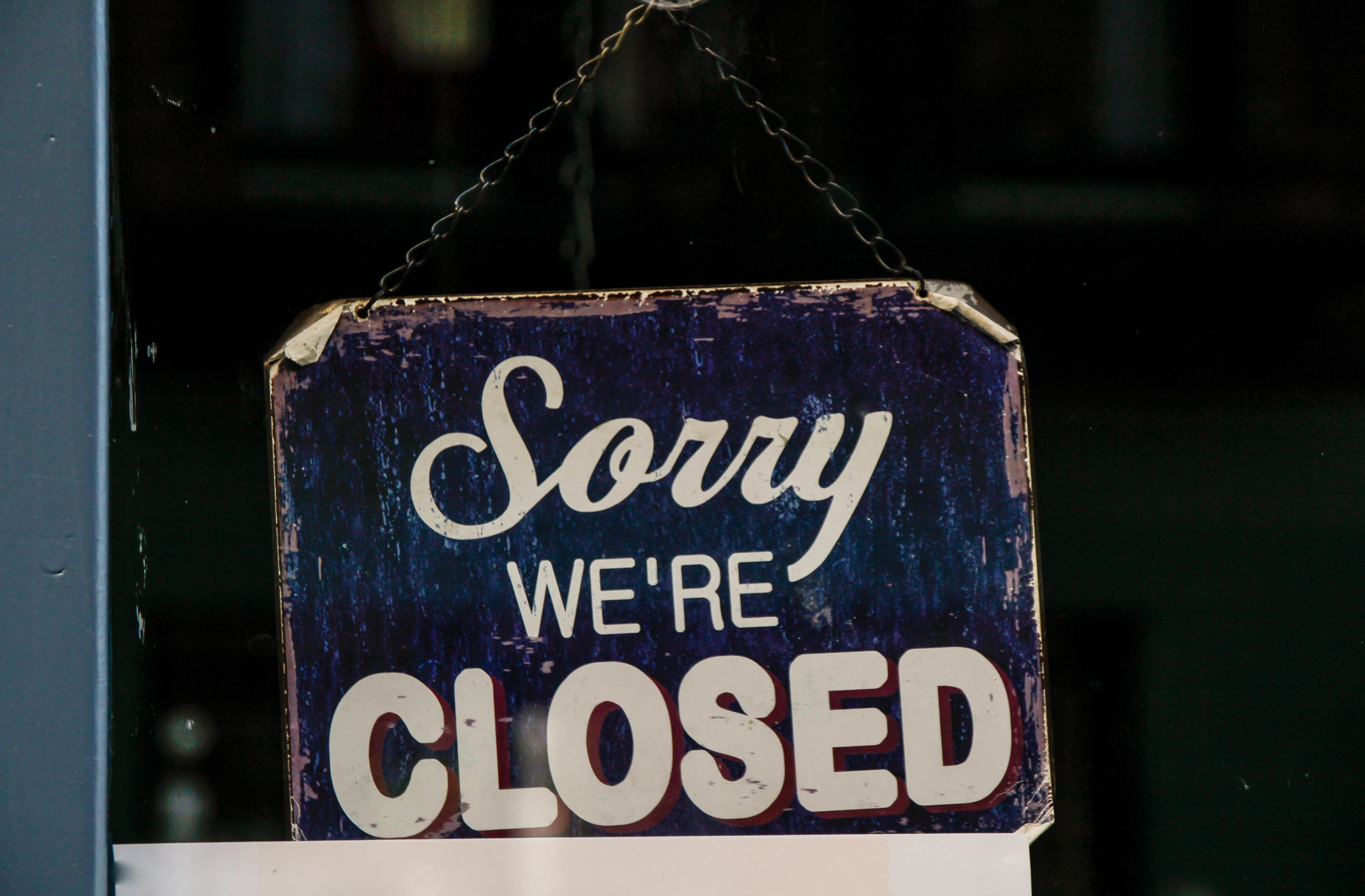Stock Market Holidays in 2025: NYSE, NASDAQ and Wall Street Holidays
When are the stock market holidays? Here, we look at which days the NYSE, Nasdaq and bond markets are off in 2025.


What are the stock market holidays for 2025? This handy guide to when the stock market and bond market holidays fall throughout the calendar year will help you answer that question.
In 2022, the list of stock market holidays grew by one when Juneteenth — the June 19 holiday commemorating the end of slavery — became the 11th federal holiday.
When then-President Joe Biden signed the bill in 2021, Juneteenth became the first new federal holiday since Martin Luther King, Jr. Day., which was signed into law in 1983.
From just $107.88 $24.99 for Kiplinger Personal Finance
Be a smarter, better informed investor.

Sign up for Kiplinger’s Free Newsletters
Profit and prosper with the best of expert advice on investing, taxes, retirement, personal finance and more - straight to your e-mail.
Profit and prosper with the best of expert advice - straight to your e-mail.
There is a full slate of holidays in 2025, so it's worth keeping informed on when they are scheduled.
Stock market holiday schedule
The NYSE and Nasdaq typically observe 10 stock market holidays each year. Here's what will be observed in 2025:
- New Year's Day – Wednesday, January 1
- Martin Luther King, Jr. Day – Monday, January 20
- Presidents' Day – Monday, February 17
- Good Friday – Friday, April 18
- Memorial Day – Monday, May 26
- Juneteenth – Thursday, June 19
- Independence Day – Friday, July 4
- Labor Day – Monday, September 1
- Thanksgiving Day – Thursday, November 27
- Christmas Day – Thursday, December 25
And sometimes, the stock market will close early in the days preceding or following market holidays.
For example, the NYSE and Nasdaq close at 1 pm on July 3 (if both it and July 4 fall on a weekday), the day after Thanksgiving, also known as Black Friday, and on Christmas Eve (if the holiday falls on a weekday).
Below, you'll find the full stock market holiday schedule for 2025.
2025 stock market holidays
Date | Holiday | NYSE | Nasdaq |
Wednesday, January 1 | New Year's Day | Closed | Closed |
Monday, January 20 | Martin Luther King, Jr. Day | Closed | Closed |
Monday, February 17 | Presidents' Day/Washington's Birthday | Closed | Closed |
Thursday, April 17 | Maundy Thursday | Open | Open |
Friday, April 18 | Good Friday | Closed | Closed |
Friday, May 23 | Friday before Memorial Day | Open | Open |
Monday, May 26 | Memorial Day | Closed | Closed |
Thursday, June 19 | Juneteenth National Independence Day | Closed | Closed |
Thursday, July 3 | Day before Independence Day | Early close (1 pm) | Early close (1 pm) |
Friday, July 4 | Independence Day | Closed | Closed |
Monday, September 1 | Labor Day | Closed | Closed |
Monday, October 13 | Columbus Day/Indigenous Peoples' Day | Open | Open |
Tuesday, November 11 | Veterans Day | Open | Open |
Thursday, November 27 | Thanksgiving Day | Closed | Closed |
Friday, November 28 | Day after Thanksgiving/Black Friday | Early close (1 pm) | Early close (1 pm) |
Wednesday, December 24 | Christmas Eve | Early close (1 pm) | Early close (1 pm) |
Thursday, December 25 | Christmas Day | Closed | Closed |
Wednesday, December 31 | New Year's Eve | Open | Open |
Bond market holiday schedule
The bond markets observe the same 10 holidays as the stock market does, as well as two additional holidays. Here's where they fall this calendar year:
- Columbus Day – Monday, October 13
- Veterans Day – Tuesday, November 11
The bond markets also observe several early closings at 2 pm each year. This is when those occur in 2025:
- The Thursday before Good Friday – Thursday, April 17
- The Friday before Memorial Day – Friday, May 23
- The day preceding Independence Day – Thursday, July 3
- Black Friday, or the day after Thanksgiving – Friday, November 28
- Christmas Eve – Wednesday, December 24
- New Year's Eve – Wednesday, December 31
Here is the entire bond market holiday schedule for 2025:
2025 bond market holidays
Date | Holiday | Bond Markets |
Wednesday, January 1 | New Year's Day | Closed |
Monday, January 20 | Martin Luther King, Jr. Day | Closed |
Monday, February 17 | Presidents' Day/Washington's Birthday | Closed |
Thursday, April 17 | Maundy Thursday | Early close |
Friday, April 18 | Good Friday | Closed |
Friday, May 23 | Friday before Memorial Day | Early close |
Monday, May 26 | Memorial Day | Closed |
Thursday, June 19 | Juneteenth National Independence Day | Closed |
Thursday, July 3 | Day before Independence Day | Early close |
Friday, July 4 | Independence Day | Closed |
Monday, September 1 | Labor Day | Closed |
Monday, October 13 | Columbus Day/Indigenous Peoples' Day | Closed |
Tuesday, November 11 | Veterans Day | Closed |
Thursday, November 27 | Thanksgiving Day | Closed |
Friday, November 28 | Day after Thanksgiving/Black Friday | Early close |
Wednesday, December 24 | Christmas Eve | Early close |
Thursday, December 25 | Christmas Day | Closed |
Wednesday, December 31 | New Year's Eve | Early close |
When it comes to the stock and bond markets alike, if a holiday falls on a weekend, market closures are dictated by two rules:
- If the holiday falls on a Saturday, the market will close on the preceding Friday.
- If the holiday falls on a Sunday, the market will close on the following Monday.
What are the stock and bond market trading hours?
For those wanting answers to other questions, like what time does the market open, regular stock market trading hours for the New York Stock Exchange (NYSE) and Nasdaq Stock Market are 9:30 am to 4 pm on weekdays.
Bond markets usually trade between 8 am and 5 pm.
The stock markets close at 1 pm on early closure days. Bond markets close early at 2 pm. (All times are in Eastern unless otherwise indicated.)
Many folks might wonder why the stock market offers such limited hours when there are certainly people who want to buy and sell at all times of the day.
One of the main reasons for this is "liquidity," or how much buying and selling is going on at a given time.
The more liquidity in a particular security, the likelier you are to get a fair price on it; the less liquidity, the more likely you might have to settle for a less-than-ideal price to finish a transaction.
"For the market to function effectively, you need buyers and sellers," says Charles Sizemore, principal of Sizemore Capital Management.
"This is why the stock market has set hours that happen to correspond to the East Coast workday. You want the maximum number of traders buying and selling at the same time," Sizemore adds.
If you were at an estate auction selling your grandmother's antiques, you'd want a lot of bidders there. It's the same rationale in the stock market.
And there is trading that is done outside of these regular hours. On days with a regular session, for instance, there is "pre-market" trading. This occurs before the market, and while hours vary, they can extend as early as 4 am and run until the opening bell rings at 9:30 am.
There is also "after-hours" trading, which happens after the market closes and typically runs from 4 pm to 8 pm. And some online platforms are now offering "overnight trading," which gives investors the ability to trade 24 hours a day.
But just because you can trade outside of regular stock market trading hours doesn't necessarily mean you should.
Investors should be aware that volume and liquidity tend to be lower in pre-market, after-hours and overnight trading.
Temporary market stoppages
The stock market rarely closes unexpectedly, but so-called circuit breakers do occasionally trigger temporary trading halts.
Circuit breakers were first introduced after the Black Monday crash of October 1987. The Dow dropped almost 23% in a single session, which stands as a record to this day.
The most recent circuit breaker was triggered in March 2020 at the start of the COVID-19 pandemic.
Circuit breakers are intended to curb panic selling. Like calling a timeout in sports, a temporary pause in trading allows market participants to catch their breath, though it doesn't necessarily keep stocks from declining once trading resumes.
There are three levels of circuit breakers tied to how steeply the market declines:
- A Level 1 market-wide circuit breaker is tripped if the S&P 500 falls 7% from its previous close.
- A Level 2 circuit breaker comes into effect when the market plunges 13%.
- A Level 3 circuit breaker kicks in if the market tanks 20%.
A Level 1 or Level 2 breach halts trading for a minimum of 15 minutes. A Level 3 rout halts trading for the remainder of the trading day.
Level 1 and Level 2 circuit breakers can be triggered between 9:30 am and 3:25 pm. A Level 3 breach can be triggered at any time.
Extraordinary stock market closures
The market has also shut down a smattering of times throughout history following catastrophic events.
In 2012, the New York Stock Exchange and Nasdaq closed for two days due to damage caused by Hurricane Sandy.
And the attacks on the World Trade Center and Pentagon prevented the market from opening on September 11, 2001, and the exchanges remained shut until September 17.
Prior to that, you have to go back to World War I for an example of the stock market shutting down. The outbreak of hostilities in Europe led The New York Stock Exchange to close up shop from July 31 to November 28, 1914.
The market went dark only two other times in its history. The NYSE closed for 10 days during the Panic of 1873; and it took a week off trading to mourn the assassination of President Abraham Lincoln in 1865.
Additionally, markets will typically close when a former president dies. They were most recently shuttered in January 2025 for a national day of mourning and a state funeral for former President Jimmy Carter.
Data provided by the NYSE and SIFMA.
Related content
- Kiplinger's Earnings Calendar for This Week
- Kiplinger's Economic Calendar for This Week
- When Is the Next Fed Meeting?
- When Is the Next CPI Report?
- When Is the Next Jobs Report?
Profit and prosper with the best of Kiplinger's advice on investing, taxes, retirement, personal finance and much more. Delivered daily. Enter your email in the box and click Sign Me Up.
Kyle Woodley is the Editor-in-Chief of WealthUp, a site dedicated to improving the personal finances and financial literacy of people of all ages. He also writes the weekly The Weekend Tea newsletter, which covers both news and analysis about spending, saving, investing, the economy and more.
Kyle was previously the Senior Investing Editor for Kiplinger.com, and the Managing Editor for InvestorPlace.com before that. His work has appeared in several outlets, including Yahoo! Finance, MSN Money, Barchart, The Globe & Mail and the Nasdaq. He also has appeared as a guest on Fox Business Network and Money Radio, among other shows and podcasts, and he has been quoted in several outlets, including MarketWatch, Vice and Univision. He is a proud graduate of The Ohio State University, where he earned a BA in journalism.
You can check out his thoughts on the markets (and more) at @KyleWoodley.
-
 The Best Mid-Cap ETFs to Buy
The Best Mid-Cap ETFs to BuyThe best mid-cap ETFs to buy offer efficient and diversified exposure to a universe full of highly interesting companies.
-
 Tariffs, Inflation, Uncertainty, Oh My: How to Feel Less Stressed About Finances Now, Really
Tariffs, Inflation, Uncertainty, Oh My: How to Feel Less Stressed About Finances Now, ReallyTariffs, high prices and an uncertain economy getting you down? These steps can help.
-
 The Best Mid-Cap ETFs to Buy
The Best Mid-Cap ETFs to BuyThe best mid-cap ETFs to buy offer efficient and diversified exposure to a universe full of highly interesting companies.
-
 Tariffs, Inflation, Uncertainty, Oh My: How to Feel Less Stressed About Finances Now
Tariffs, Inflation, Uncertainty, Oh My: How to Feel Less Stressed About Finances NowTariffs, high prices and an uncertain economy getting you down? These steps can help.
-
 Your Estate Plan Isn't 'Done' Until You've Completed These Five Steps, From an Estate Planning Attorney
Your Estate Plan Isn't 'Done' Until You've Completed These Five Steps, From an Estate Planning AttorneyCongratulations on getting your estate plan in order. Now, you need to communicate the relevant details to ensure your plan is effectively carried out.
-
 A Nightmare for Parents: How to Navigate the Legal Boundaries of Tenant Rights During a Family Crisis
A Nightmare for Parents: How to Navigate the Legal Boundaries of Tenant Rights During a Family CrisisThis family's story illustrates how important it is to get help sooner rather than later and highlights the complexities of tenant rights and legal protections.
-
 Amazon Surge Sends S&P 500, Nasdaq Higher to Start November: Stock Market Today
Amazon Surge Sends S&P 500, Nasdaq Higher to Start November: Stock Market TodayAmazon inked a $38 billion cloud deal with OpenAI, which sent the stock to the top of the Dow Jones on Monday.
-
 If You'd Put $1,000 Into Home Depot Stock 20 Years Ago, Here's What You'd Have Today
If You'd Put $1,000 Into Home Depot Stock 20 Years Ago, Here's What You'd Have TodayHome Depot stock has been a buy-and-hold banger for truly long-term investors.
-
 Eight Steps to Help Get You Through the Open Enrollment Jungle at Work
Eight Steps to Help Get You Through the Open Enrollment Jungle at WorkWondering how to survive open enrollment this year? Arm yourself with these tools to cut through the process and get the best workplace benefits for you.
-
 Seven Moves for High-Net-Worth People to Make Before End of 2025, From a Financial Planner
Seven Moves for High-Net-Worth People to Make Before End of 2025, From a Financial PlannerIt's time to focus on how they can potentially reduce their taxes, align their finances with family goals and build their financial confidence for the new year.
